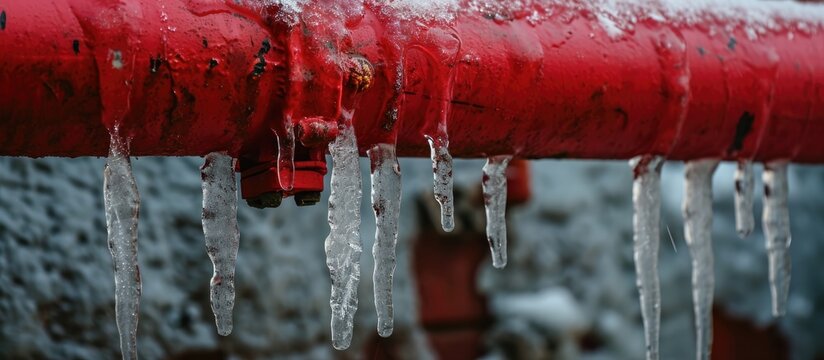Important Advice for Avoiding Frozen Plumbing in Cold Weather Seasons
Important Advice for Avoiding Frozen Plumbing in Cold Weather Seasons
Blog Article
Here below you might get more high-quality news relating to How to prepare your home plumbing for winter weather.

Cold weather can wreak havoc on your plumbing, particularly by freezing pipes. Right here's just how to stop it from occurring and what to do if it does.
Intro
As temperature levels drop, the risk of icy pipes rises, possibly bring about pricey repair services and water damages. Understanding how to stop icy pipelines is critical for homeowners in chilly climates.
Prevention Tips
Shielding vulnerable pipelines
Wrap pipelines in insulation sleeves or make use of heat tape to safeguard them from freezing temperatures. Focus on pipelines in unheated or exterior locations of the home.
Home heating methods
Maintain interior spaces adequately heated up, specifically areas with plumbing. Open up closet doors to allow cozy air to distribute around pipelines under sinks.
Just how to recognize frozen pipes
Seek decreased water circulation from faucets, uncommon odors or sounds from pipes, and noticeable frost on revealed pipelines.
Long-Term Solutions
Structural adjustments
Take into consideration rerouting pipes far from exterior wall surfaces or unheated areas. Add added insulation to attic rooms, basements, and crawl spaces.
Upgrading insulation
Purchase high-grade insulation for pipes, attics, and wall surfaces. Proper insulation helps maintain constant temperatures and lowers the danger of frozen pipes.
Shielding Outside Pipes
Yard tubes and outdoor taps
Separate and drain pipes yard hose pipes prior to winter months. Install frost-proof spigots or cover outside taps with protected caps.
Recognizing Frozen Pipelines
What causes pipes to ice up?
Pipes ice up when revealed to temperatures below 32 ° F (0 ° C) for extended durations. As water inside the pipelines freezes, it expands, putting pressure on the pipe wall surfaces and possibly causing them to burst.
Dangers and problems
Frozen pipelines can result in supply of water disturbances, property damages, and pricey repairs. Ruptured pipelines can flood homes and trigger substantial architectural damage.
Indications of Frozen Pipeline
Determining frozen pipelines early can avoid them from breaking.
What to Do If Your Pipes Freeze
Immediate actions to take
If you believe frozen pipelines, maintain taps open to ease stress as the ice thaws. Utilize a hairdryer or towels soaked in warm water to thaw pipelines gradually.
Conclusion
Preventing icy pipes requires positive measures and fast reactions. By comprehending the reasons, indications, and preventive measures, homeowners can secure their pipes during cold weather.
6 Proven Ways to Prevent Frozen Pipes and Protect Your Home
Disconnect and Drain Garden Hoses
Before winter arrives, start by disconnecting your garden hoses and draining any remaining water. Close the shut-off valves that supply outdoor hose bibs and leave the outdoor faucet open to allow any residual water to drain. For extra protection, consider using faucet covers throughout the colder months. It’s also important to drain water from any sprinkler supply lines following the manufacturer’s directions.
Insulate Exposed Pipes
Insulating your pipes is an effective way to prevent freezing. Pipe insulation is readily available at home improvement stores and is relatively inexpensive. Pay close attention to pipes in unheated areas such as the attic, basement, crawl spaces, or garage. Apply foam insulation generously to create a buffer against the cold. You can also wrap your pipes in heat tape or thermostat-controlled heat cables for added warmth.
Seal Air Leaks
Inspect your home for any cracks or openings that could let in cold air. Seal any holes around the piping in interior or exterior walls, as well as the sill plates where your home rests on its foundation. Additionally, make sure to keep your garage door closed unless you’re entering or exiting. Leaving it open creates a significant air leak that can lead to frozen pipes.
Allow Warm Air Circulation
During cold snaps, it’s essential to allow warm air to circulate evenly throughout your home. Leave interior doors ajar to promote better airflow. Open kitchen and bathroom cabinets to help distribute heat consistently around the rooms. If you have small children or pets, be sure to remove any household chemicals or potentially harmful cleaners from open cabinets for safety.
Let Faucets Drip
A small trickle of water can make a big difference in preventing ice formation inside your pipes. When temperatures drop significantly, start a drip of water from all faucets served by exposed pipes. This continuous flow helps prevent the water from freezing. Additionally, running a few faucets slightly can relieve pressure inside the pipes, reducing the chances of a rupture if the water inside does freeze.
https://choateshvac.com/6-proven-ways-to-prevent-frozen-pipes-and-protect-your-home/

As a person who reads about 6 Ways to Prevent Frozen Pipes, I thought sharing that section was a good idea. Make sure you take a moment to promote this write-up if you appreciated it. Kudos for your time. Please check up our blog back soon.
Call Today Report this page